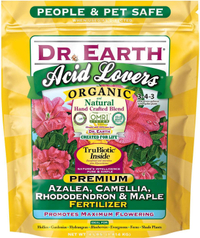Experts reveal how and when to fertilize azaleas to ensure you have happy and healthy shrubs
Azaleas are acid-loving plants that want an ericaceous feed to keep them blooming
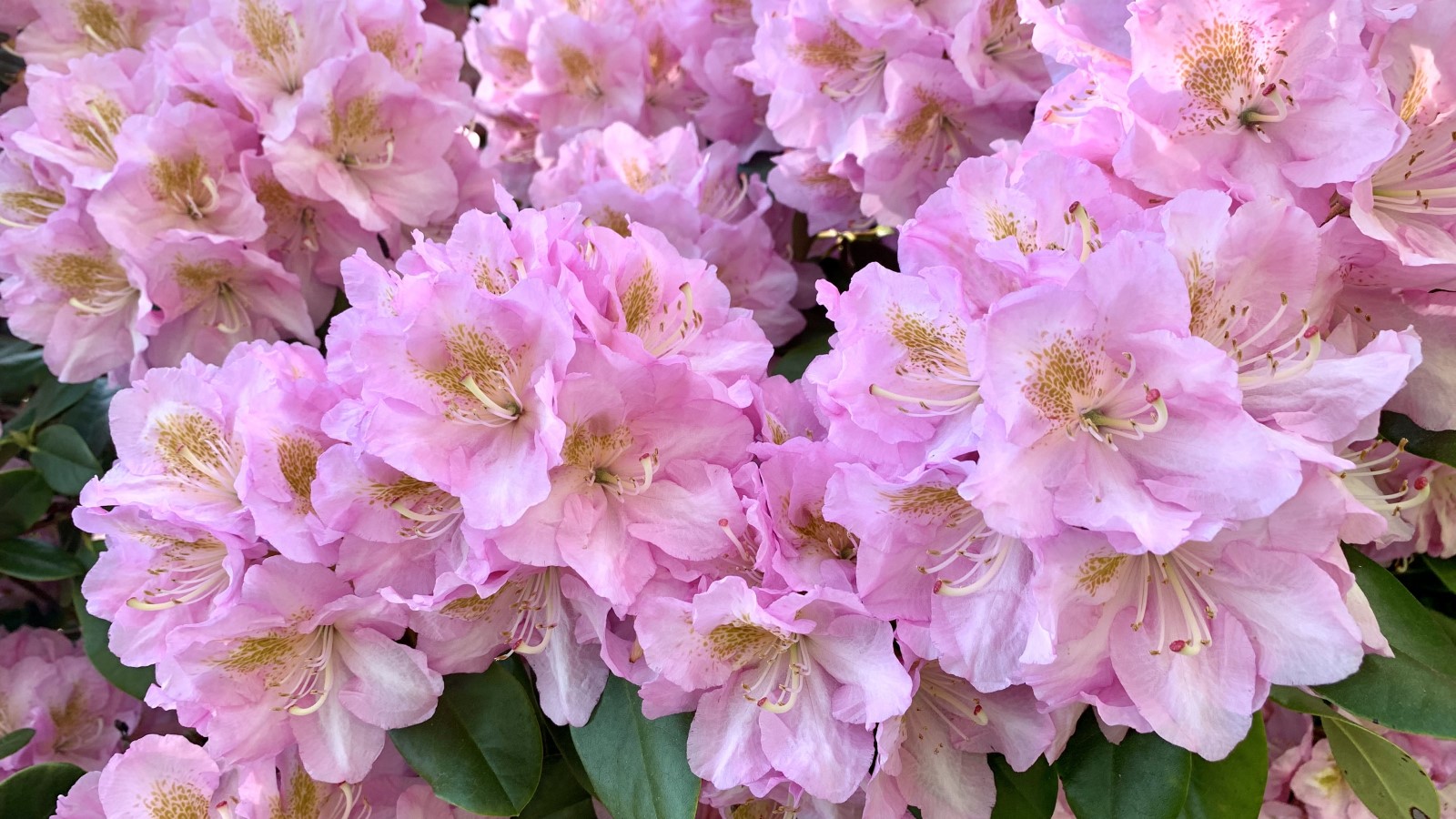

Azaleas are often low maintenance yet offer striking spring blooms for the backyard, which is in part what makes them so popular. Once they are established azaleas do not need much aftercare. They require little watering, their pruning annually is often minimal, and feeding azaleas is not always required.
Plant these acid-loving shrubs in a shaded area of the garden and they will reward you year after year with spectacular shows of color. If you put them in rich and fertile soil and give them an annual mulch, then that should provide them with enough nutrients to thrive.
If you are growing azaleas on poor soils, or do notice any signs of deficiency in their growth, then fertilizing them can give them the boost they need. A feed once or twice a year with ericaceous fertilizer will provide them with all the nutrients to grow healthy and bloom prolifically.
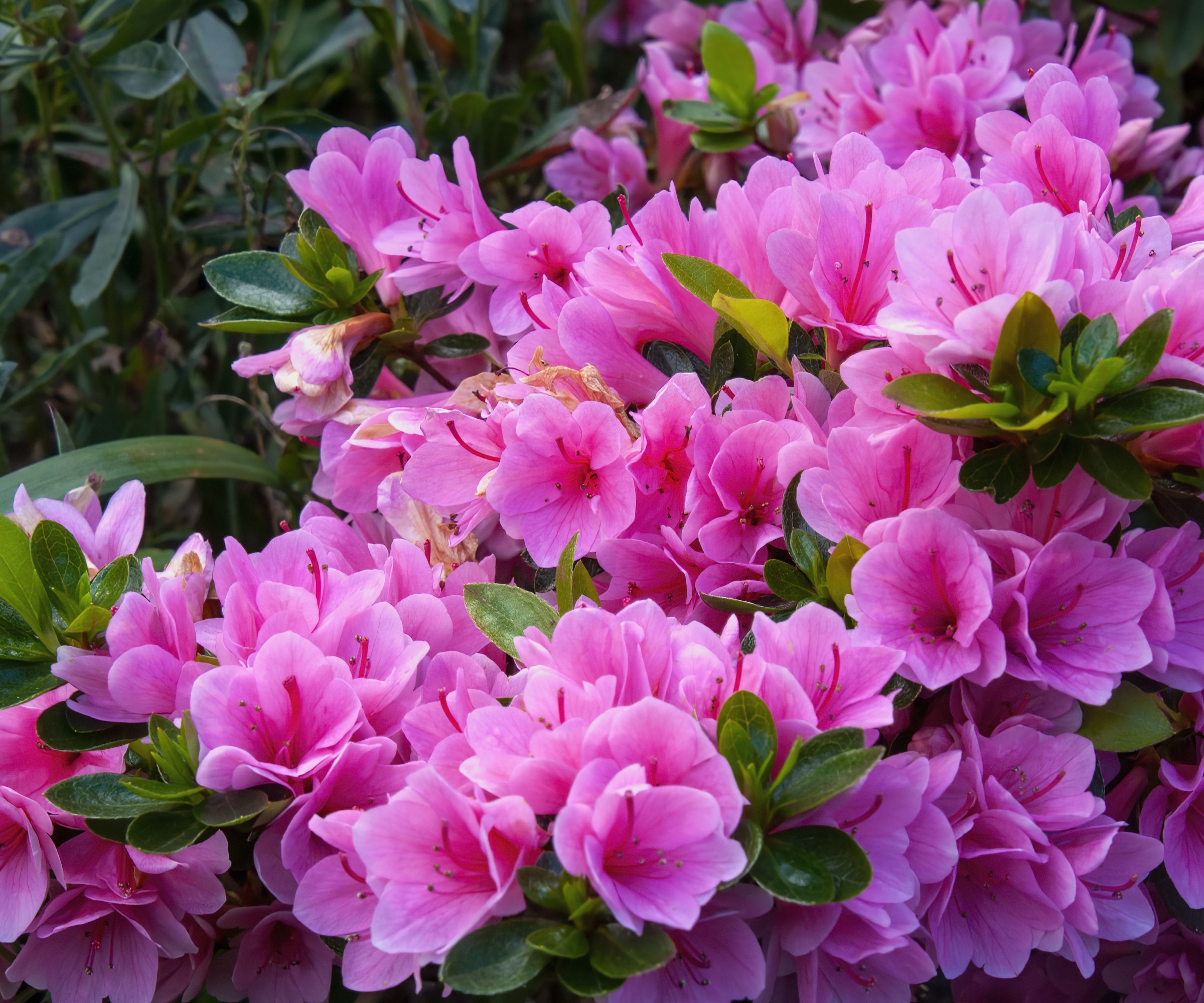
Azaleas light up the garden with bright colors in spring
When do you fertilize azaleas?
Azaleas are some of the best flowering shrubs as part of any backyard idea and can bring Japanese garden vibes to an area.
When planting azaleas, if you can put them in a fertile and rich soil then they can grow completely happy without the need for any additional fertilization. Good soil and annual mulching each year can be enough to give the shrubs the nutrients they need, as that mulch breaks down and enriches the soil to benefit the plants in the area. The use of mulches such as compost, leaf mold, well-rotted manure, or shredded leaves can supply enough nutrients to keep azaleas happy.
If the soil is less fertile, or an azalea has shown signs of any nutrient deficiencies, such as yellowing leaves, stunted growth, or the shrub is dropping leaves, then applying fertilizer can benefit the plants.
The ideal time to fertilize azaleas is in the early spring, just as the new leaf growth starts to emerge. Andrew Connolly, the founder of Little Flower Cottage, a gardening and flower blog, claims that feeding azaleas at this stage ‘kick-starts the growing season and provides essential nutrients for robust foliage and abundant blooms’.
He adds: ‘It is also beneficial to apply a second round of fertilizer after the flowering period to support the plant's recovery and prepare it for the next season.’
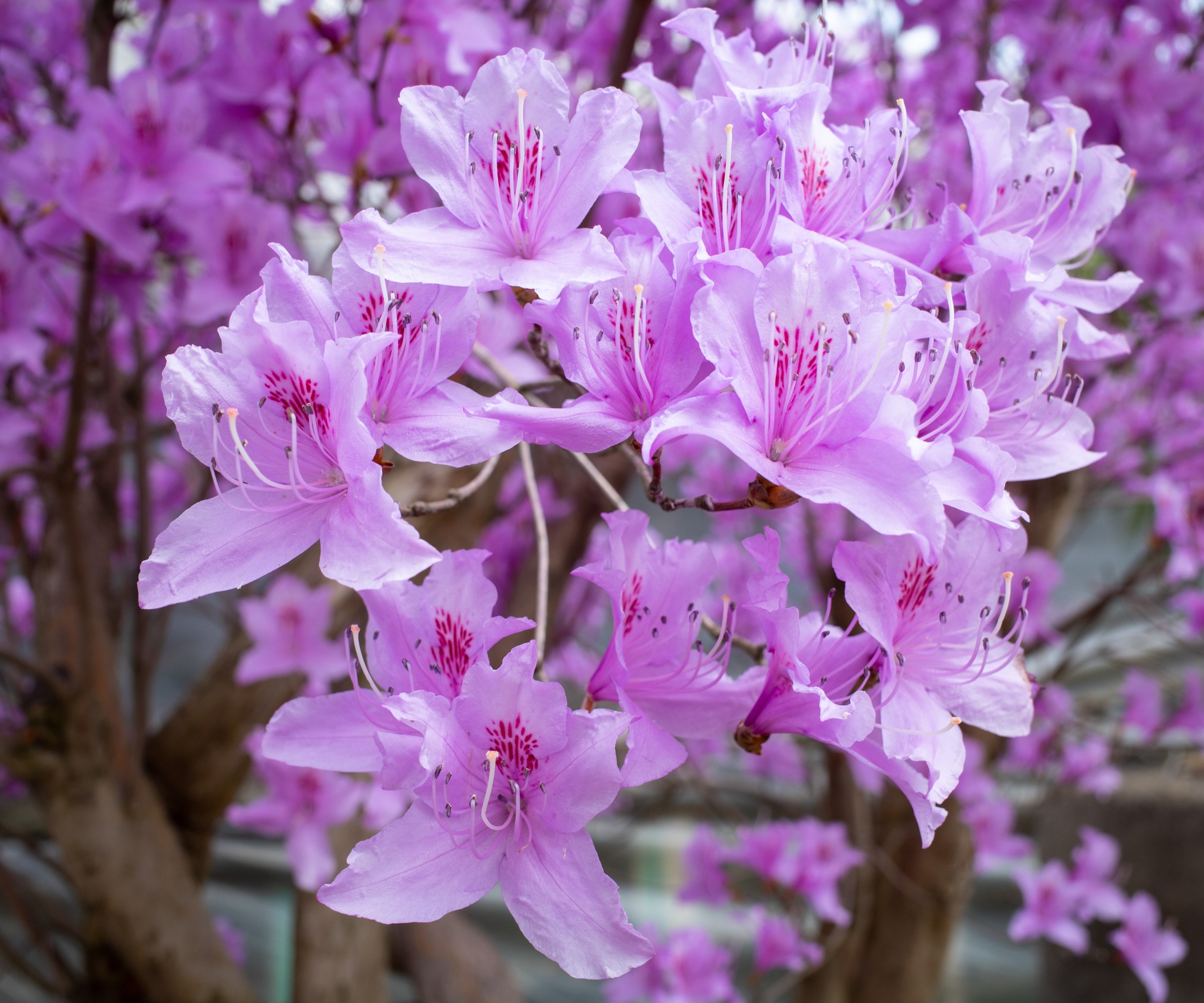
Azaleas can be really low maintenance backyard additions
How often do you fertilize azaleas?
It will often be sufficient to only feed azaleas once each year, a second feed can be beneficial but any more than that can be harmful to the plant. Azaleas do not need as much fertilizer as other plants and their delicate roots mean they benefit from less rather than more feed.
John Ehrling, president and co-founder of Garden Savvy, warns that fertilizing too frequently ‘may lead to excessive growth and could potentially harm and overcrowd’ the azalea. It is advised not to feed azaleas in the late summer or fall as this can stimulate new growth that will not have time to harden off before winter and be damaged by the frosts.
If you are growing azaleas in pots, then the feeding regime remains generally the same. Usually plants in pots as part of container gardening ideas can quickly use up the nutrients in the available soil, and forgetting to fertilize is a common container gardening mistake to avoid. However, as azaleas are not heavy feeders, a dose of slow-release fertilizer formulated for acid-loving plants can be added at the start of spring and also in summer.

John Ehrling is the president and co-founder of Garden Savvy, which offers software to gardeners and farmers looking to make their gardening life easier. It allows users to build and track a garden digitally, surf their gardening search engine to find the best suppliers, and read growing guides.
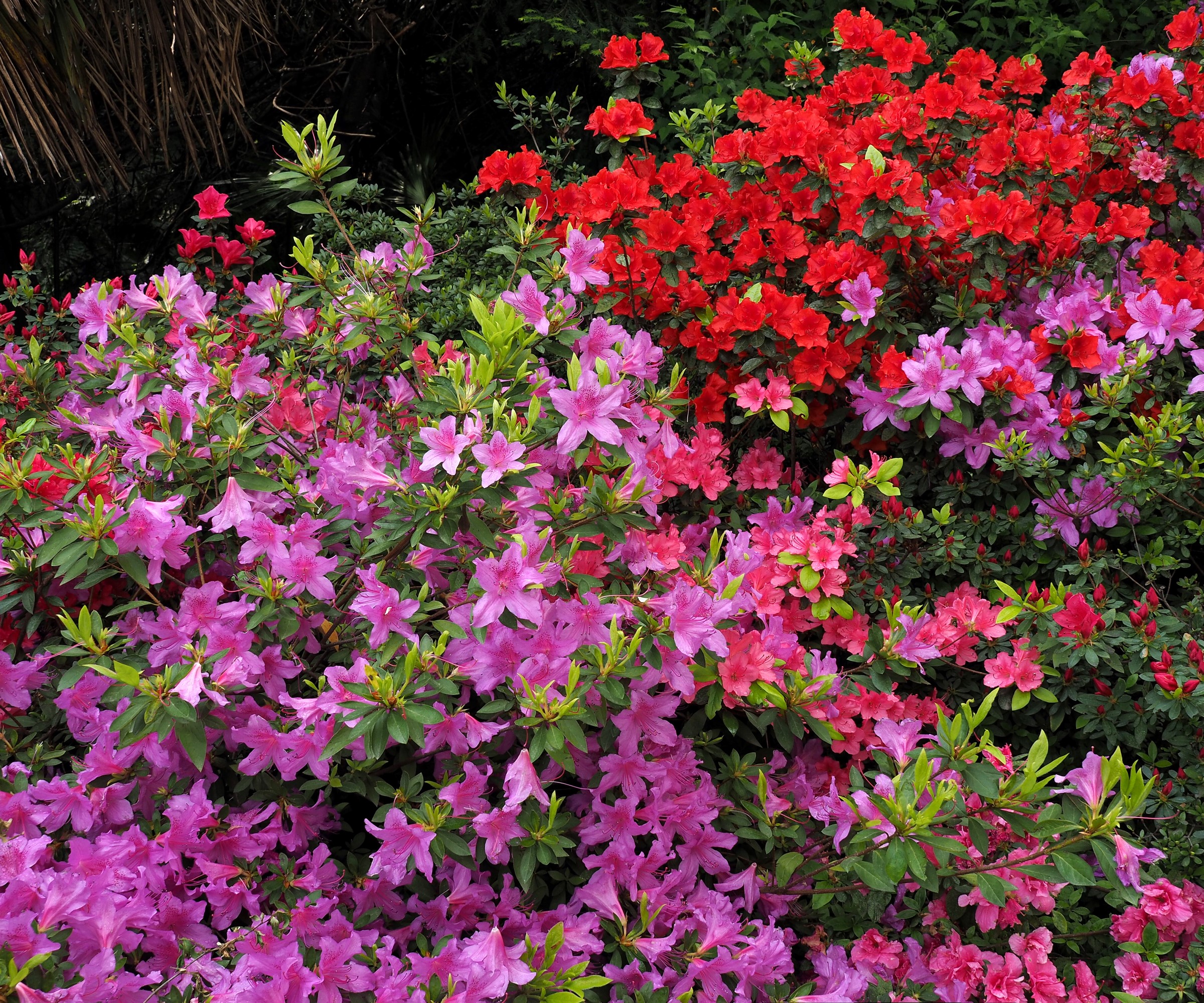
Azaleas do not have high fertilizer requirements
What is the best fertilizer for azaleas?
Azaleas thrive in acidic soil, so it is best to choose a fertilizer that is designed specifically for acid-loving plants. There are ways you can make the soil more acidic and better suited for your azaleas to thrive. You can also get dedicated fertilizers that are labeled as specifically for azaleas, these are specially formulated to meet the needs of these particular plants.
Azaleas do benefit from the ericaceous feed as this helps to maintain the ideal pH level of the soil that the shrubs want, which is a pH of 5.0. to 5.5. Fertilizers specifically designed for azaleas often come in granular form, for example, the granular Schultz Azalea Plant Food available at Amazon, to be scattered around the plants and watered in, rather than in liquid form mixed in when you come to water plants.
Tony O’Neill, an experienced gardener, and author at Simplify Gardening, recommends: '‘A slow-release granular type with a balanced formula would serve well. The balanced mix provides equal nitrogen, phosphorous, and potassium ratio, crucial for overall plant health and vigor.
‘Remember, it's always important not to over-fertilize. Azaleas are sensitive plants, and too much fertilizer can harm them. Apply it sparingly and always follow the package instructions.’
The nutrient makeup of nitrogen (N), phosphorus (P), and potassium (K) are shown as numbers on the plant fertilizer packaging. This NPK ratio is shown as three numbers and refers to how much of each nutrient is in the fertilizer.
The best mulches for azaleas, such as compost or shredded leaves, tend to have a balanced level of NPK and are slow-release, so they release the nutrients over an extended period of time.
Dr Earth Acid Lovers Azalea Fertilizer | Available at Amazon
This fertilizer is specially formulated to feed all acid-loving plants, whether in containers or in backyard soil. It has a fairly balanced NPK ratio and should be added to the soil around your azaleas.

Tony O'Neill is an accomplished gardening expert, author, and educator. With a passion for simplifying gardening practices, he has inspired a wide audience through his popular YouTube channel and website SimplifyGardening.com. Tony's expertise empowers individuals to cultivate thriving gardens and connect with nature.
FAQs
Is Miracle-Gro good for azaleas?
Miracle-Gro does offer products designed especially for use on azaleas and other acid-loving plants. This includes the Miracle-Gro Water Soluble Azalea, Camellia, and Rhododendron Plant Food, available at Amazon, that helps to feed acid-loving plants and keep them healthy and blooming.
Can you use tomato feed on azaleas?
Tomato feed tends to be higher in potassium, which helps with fruiting, which is not a nutrient that azaleas need in massive amounts. Unless you do a soil test that shows a particular deficiency, feeds high in potassium or phosphorus are unnecessary. The best options are to stick to a fertilizer with a balanced mix for your azaleas.
Do coffee grounds help azaleas?
Coffee grounds can help to lower the pH of the soil so can be beneficial to use around acid-loving plants, such as azaleas. To use coffee grounds on plants, sprinkle a cup of used coffee grounds around the azalea and incorporate them into the soil to help add nutrients and also acidify the soil.
Along with watering and feeding your shrubs, remember to prune azaleas each year to keep them looking neat and feeling in great shape. All these factors will help to ensure your azaleas are healthy and not stressed, which can leave them at increased risk of azalea diseases and pests. Happy azaleas will reward you with a stunning display of blooms year after year.
Sign up to the Homes & Gardens newsletter
Design expertise in your inbox – from inspiring decorating ideas and beautiful celebrity homes to practical gardening advice and shopping round-ups.

Drew’s passion for gardening started with growing vegetables and salad in raised beds in a small urban terrace garden. He has worked as a professional gardener in historic gardens and specialises in growing vegetables, fruit, herbs, and cut flowers as a kitchen gardener. That passion for growing extends to being an allotmenteer, garden blogger, and producing how-to gardening guides for websites. Drew was shortlisted for the New Talent of the Year award at the 2023 Garden Media Guild Awards.
-
 Plants never to grow next to fruit trees
Plants never to grow next to fruit treesExpert advice on which plants to keep away from fruit trees to encourage a healthy harvest
By Jacky Parker Published
-
 Martha Stewart's tips for arranging daffodils are unbelievably simple and effective – it's the only flower advice you need this springtime
Martha Stewart's tips for arranging daffodils are unbelievably simple and effective – it's the only flower advice you need this springtimeMartha shows us that we can create gorgeous bouquets of this seasonal flower by simply trimming the stems and placing them in specific vases
By Hannah Ziegler Published
